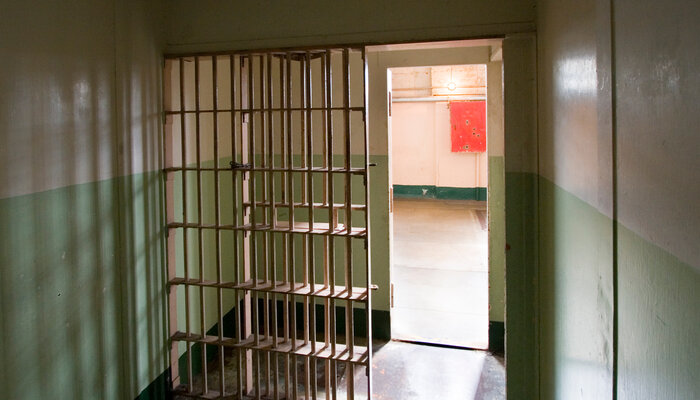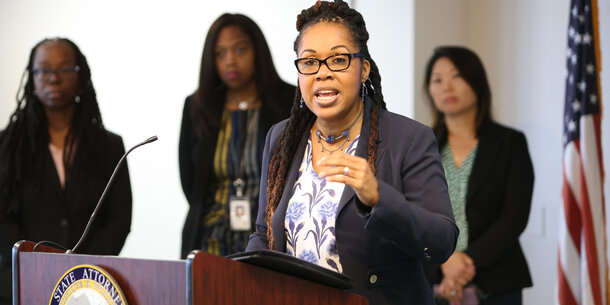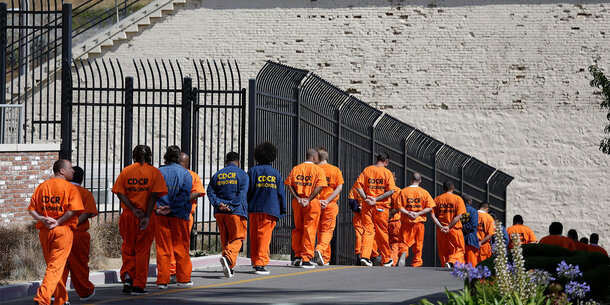The Facts on Bail Reform and Crime Rates in New York State
There is no clear connection between recent crime increases and the bail reform law enacted in 2019.

In 2019 New York State adopted a law ending the assessment of cash bail in most cases involving misdemeanors and nonviolent felonies. The law aimed to reduce the risk that someone would be jailed because they could not afford to pay for release and the unnecessary use of incarceration, both of which can have a profoundly disruptive effect on peoples’ lives.
Many police leaders and some politicians have been against these reforms from the start, arguing that they contributed to rising crime early in the Covid-19 pandemic. Those concerns, among others, drove three rounds of revisions to the bill between 2020 and 2023. Here, we review what we know so far about bail reform and its impact on public safety. Critically, there is no evidence that bail reform drove recent increases in violence.
Bail eligibility depends on several factors.
New York’s bail reform legislation went into effect at the start of 2020 and changed where and how judges may impose monetary bail pending the outcome of a criminal case. Broadly speaking, the law separates cases into two categories based on the alleged crime involved.
According to the law, judges have the option to set bail in almost any case involving a violent felony. In these “bail eligible” cases, a defendant must pay any assessed bail or face detention. In most other cases, which include most misdemeanors and nonviolent felonies, judges must release people on their own recognizance or impose some other set of conditions to ensure their return to court. Such conditions include restrictions on travel or supervision by a pretrial supervision agency.
When deciding whether to release a person or set bail, the law requires judges to focus solely on the conditions that will ensure that the person returns to court. That means, unlike most other states, New York judges cannot consider their subjective view of a person’s “dangerousness” when deciding what release conditions to set. New York’s approach, which dates back to the 1970s, reflects an attempt to preserve the presumption of innocence and reduce racial biases against defendants. State legislators carefully considered revisiting this rule in 2020 but ultimately decided against it.
Notably, judges also retain the ability to set bail in some “high risk” cases, even ones that would otherwise be ineligible for bail. Judges may set bail for defendants who have been released and are rearrested for another offense, provided both charges are felonies or Class A misdemeanors and involve “harm to an identifiable person or property.” This provision was expanded in 2022, to make clear that the definition of “harm” includes theft. As a result, a judge may set bail for a person who was charged with punching someone in a bar fight, released, and then arrested for injuring someone in another fight. The same likely holds true for repeat shoplifters. Other circumstances can make a case bail eligible as well, such as when someone is charged with a felony offense while on probation.
Research shows bail reform did not drive the 2020–21 crime increases.
Many have argued that bail reform was responsible for rising crime in New York State, both in and out of New York City. But no direct evidence has emerged to support those claims.
It is true that New York City saw a sudden increase in crime from 2019 to 2020, with an especially stark increase in murders, which rose from the 319 in 2019 to more than 450 in 2020. Shooting incidents in the city roughly doubled during the same period. Statewide, the murder rate also rose from 2.9 to 4.2 killings per 100,000 people. According to one analysis, those spikes were “concentrated in areas characterized by poverty and racial segregation.” Pretrial rearrest rates also climbed, though slightly, between 2019 and 2022.
The best available information, however, suggests that bail reform is not the primary driver of any of these increases. In one recent paper, a team of criminologists studied how bail reform affected New York State crime rates through late 2021 — the period when crime spiked most dramatically. They concluded that murder, larceny, and motor vehicle theft did increase in New York State, but found no evidence that bail reform caused those increases. Essentially, they determined, crime was poised to rise for other reasons in New York, notwithstanding bail reform.
Two studies by the Data Collaborative for Justice reached similar conclusions after a close look at trends in New York City. The first found that eliminating bail for misdemeanors and nonviolent felony offenses reduced rearrest rates. In a follow-up study, and using a different strategy, the Data Collaborative for Justice found that bail reform had no impact on rearrest rates in either direction.
That said, there is evidence that reform led to an increase in pretrial rearrests in some limited circumstances. When focusing on “high risk” cases — for example, people with a pending case or recent violent felony arrest — the Data Collaborative for Justice found that rearrest rates rose after reform. Those findings align with data from the nonprofit New York City Criminal Justice Agency, which contracts with the city on pretrial supervision work. According to the group’s data dashboard, rearrest rates are higher, and have risen moderately, in cases involving people with a more substantial criminal history. But the data also underscores that these are the vast minority of cases.
Taken together, the best available research undercuts any sweeping claims that bail reform could explain the spikes in crime the city and state saw during the pandemic. But it may point to the need for creative thinking to solve implementation issues, such as more funding to support pretrial supervision.
Crime rose in jurisdictions both with and without bail reform — and is now falling.
The increases in violence we saw in 2020 and 2021 were undeniably tragic developments but must still be considered in context. Murder rates in New York City and New York State both remain below the national average. City and state crime increases during the Covid-19 pandemic were also far from unique. Between 2019 and 2020 the national murder rate rose by roughly 30 percent, and assaults jumped by around 10 percent. These increases were felt in communities of all sizes, political alignments, and geographies — and in places with and without recent bail reform policies. In Florida, for example, murders rose by roughly 15 percent between 2019 and 2020.
Further, as of January 2024, crime has been declining in New York City, with murder and nonfatal shootings falling precipitously. That too parallels a national trend: violence declined nationally in 2022 and likely also dropped in 2023. (Officials have not yet shared data on national crime trends in 2023.)
Crime is complex, and policymakers should be wary of simplistic answers.
It may be years before we have a complete understanding of what caused crime to rise in New York during the Covid-19 pandemic, but researchers have begun to point to some potential national factors.
Gun violence appears to have significantly contributed to the increase in murders. Guns were sold, carried, and recovered at crime scenes at much higher rates than previous years. The pandemic also caused a sudden, sharp, and highly unequal recession — thrusting many people and communities into deep uncertainty. Social distancing and disruptive lockdowns severely hindered the reach of institutions that help preserve neighborhood safety. As the criminologist John Roman recently testified in a congressional hearing, “The pandemic can be simply described as an ‘everything, everywhere, all-at-once’ experience for most Americans.”
Of course, researchers and policymakers can and should continue to study the effects of bail reform on public safety, as more data and methods of analysis emerge. Many factors can influence a pretrial release decision too, making it important to look beyond the words in the statute and consider how prosecutors, judges, and other stakeholders are applying the law in practice.
Critically though, so far there is no evidence that bail reform has driven the increase in crime. That makes the case for further major revisions to the bail statute significantly weaker. Indeed, other policy interventions that support communities have the potential to build enduring public safety in the city and state.
For example, better funding for pretrial services, which lawmakers and Gov. Kathy Hochul have supported in the past, could ensure that people awaiting trial in their communities receive help they may need. Further, expanded mental health treatment services could identify and help people in crisis, as could addiction and substance abuse treatment. Other interventions, like after-school programming and summer youth employment, may provide safe places for young people and reduce opportunities for conflict. Programs to expand affordable housing could reduce strain on the city’s overburdened shelters for unhoused people, and improve quality of life, health, and safety at a stroke. Funding and support for community violence interrupters, a promising strategy that the Biden administration has embraced at the federal level, could also lead to safer neighborhoods. These approaches grab fewer headlines than bail reform, but legislators should focus on investments, like these, that are proven to address crime.






